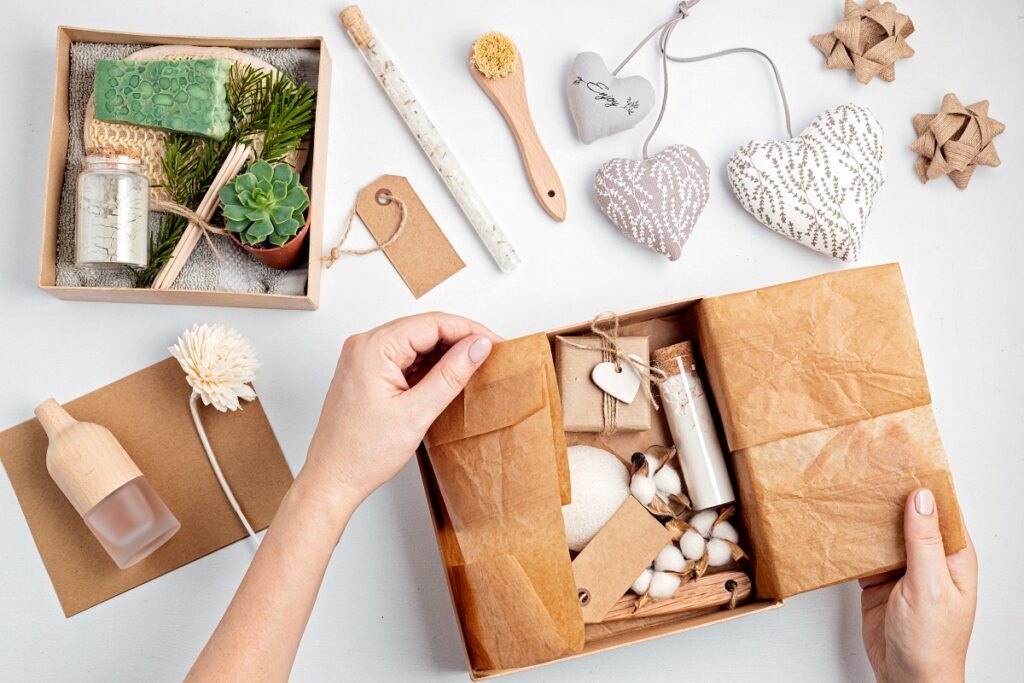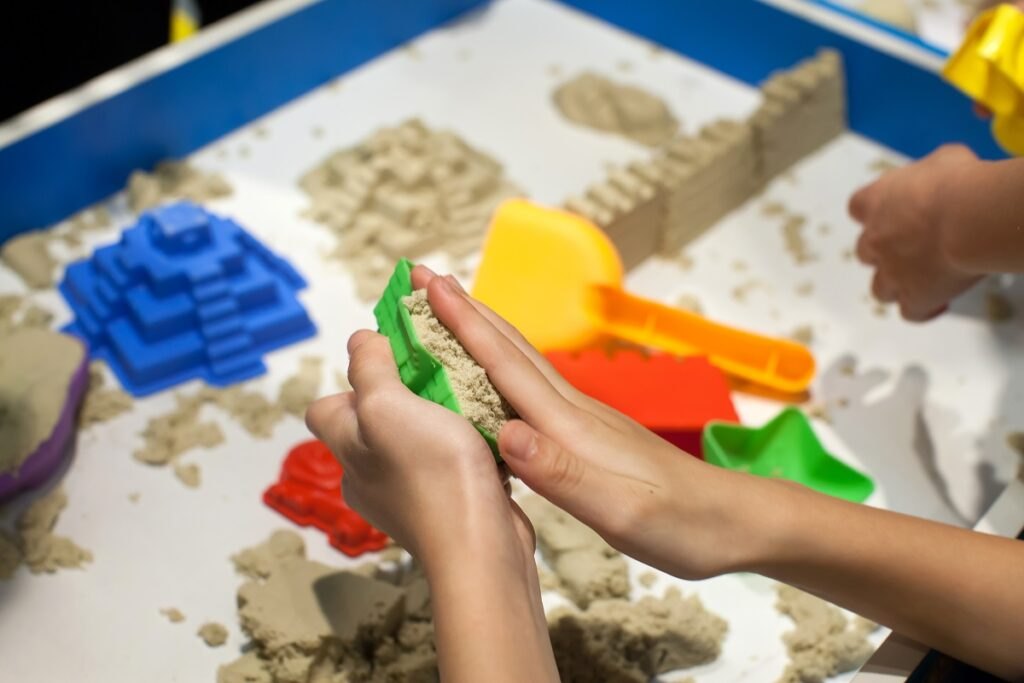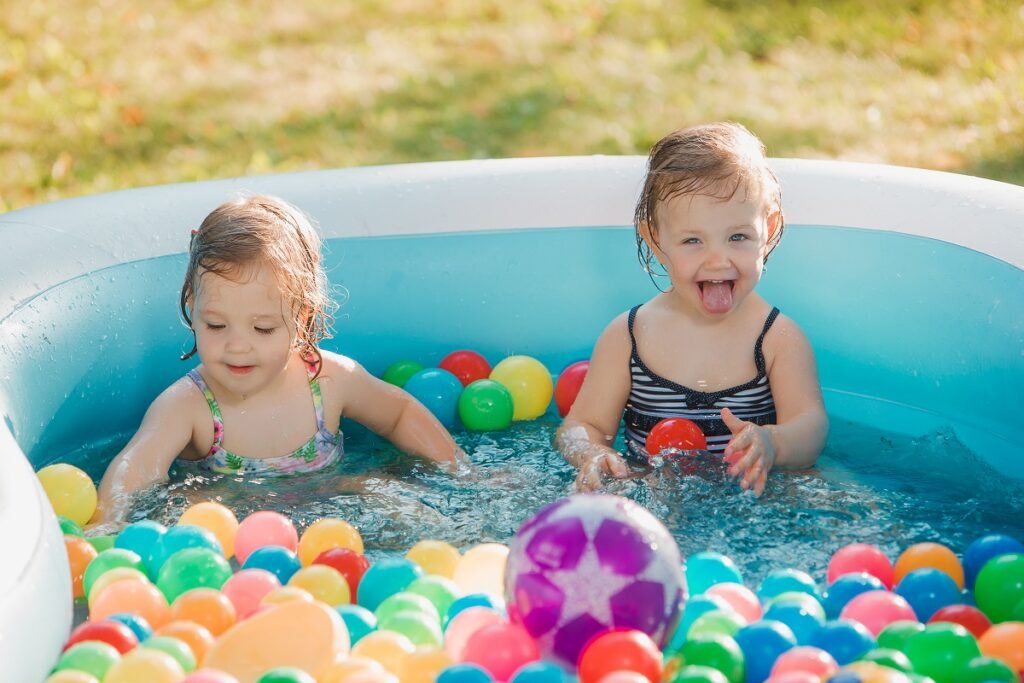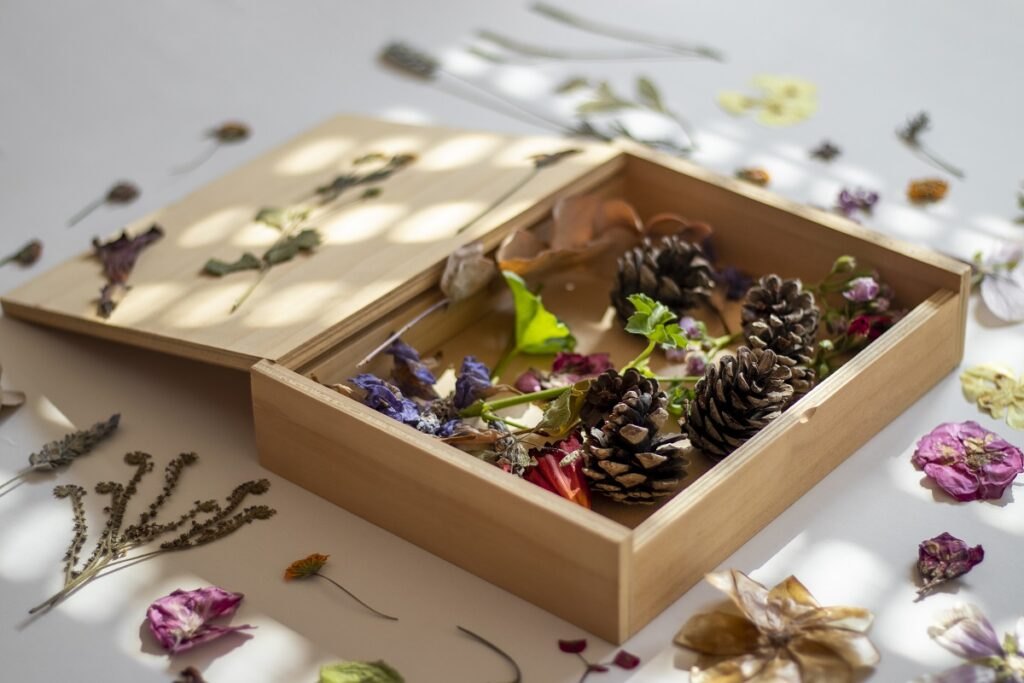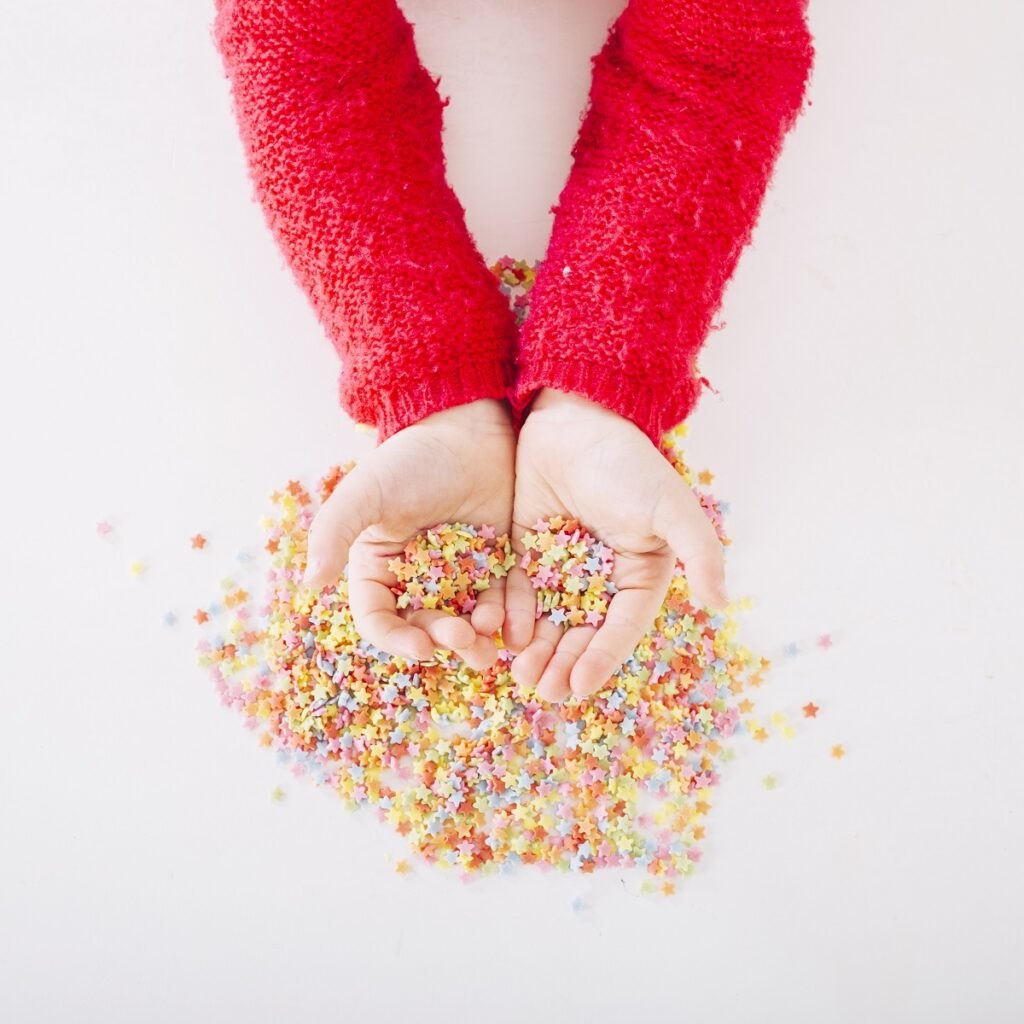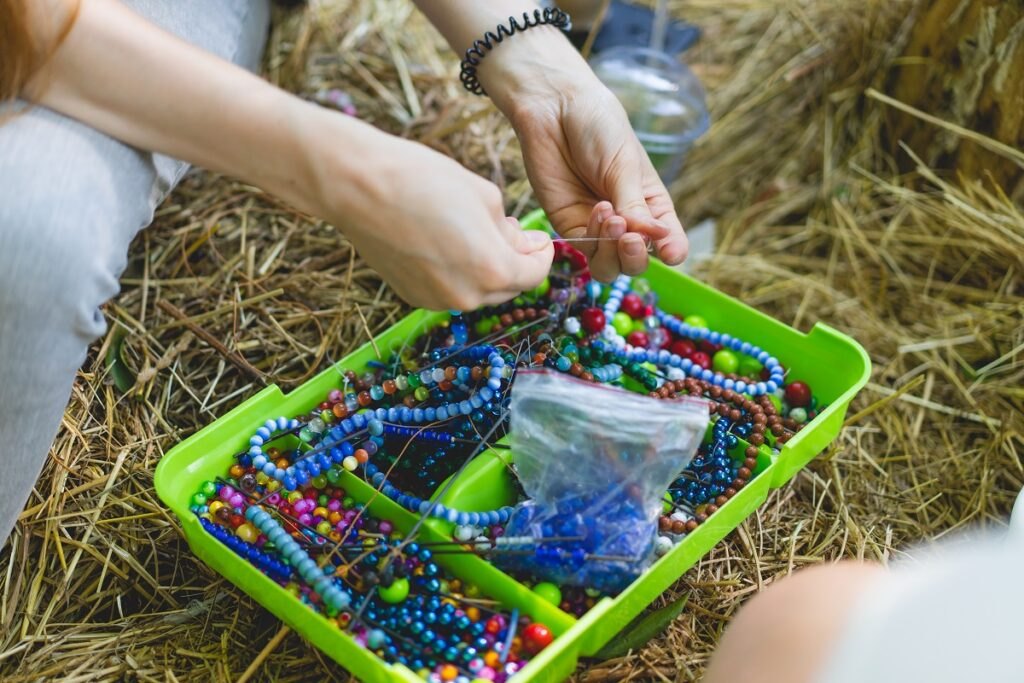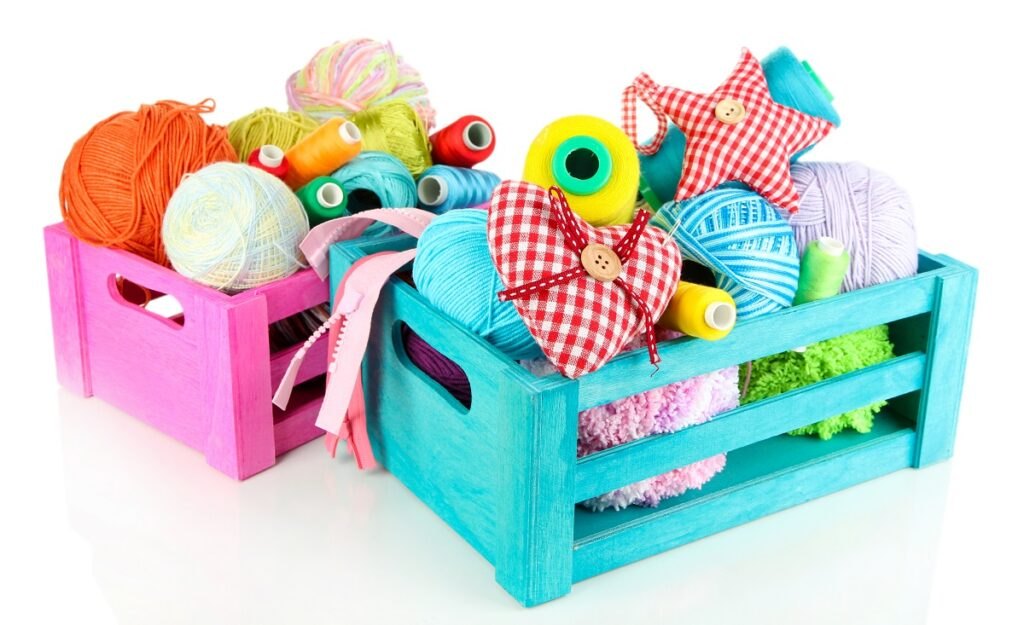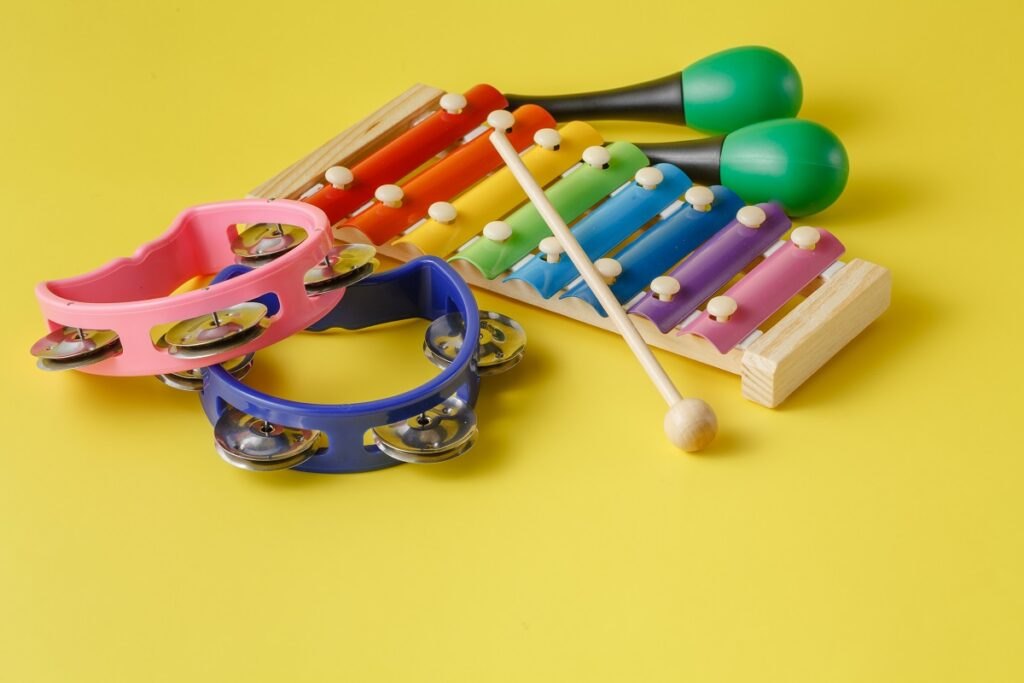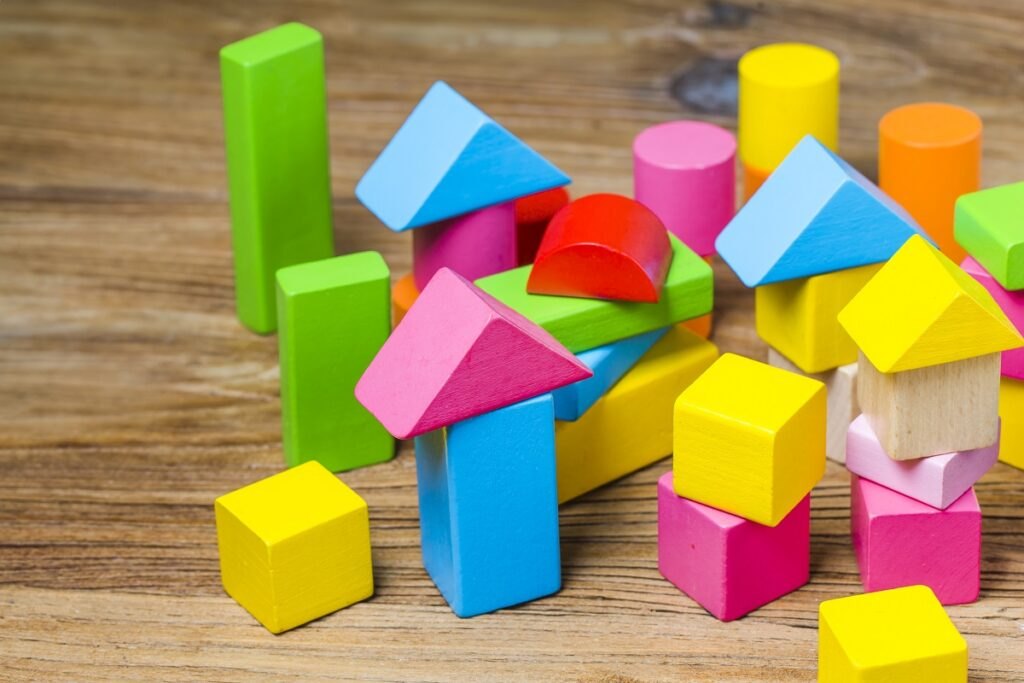Hello to all the little explorers and their caring guardians! Today we want to share a fantastic idea for creating a sensory box for toddlers. This is a simple DIY project that will not only provide children with hours of wonderful fun but also stimulate their senses and develop creativity. Ready for an exciting adventure? Let’s get started!
What is a sensory box
A sensory box is a wonderful proposal for children of various ages, especially for the youngest ones. It allows children to explore different materials, shapes, textures, and sounds while simultaneously developing their cognitive skills. It’s like a little discovery laboratory that you can create yourself!
How to start the adventure of creating a sensory box
- Choose the right box: This can be a plastic tray, a metal box, or even a cardboard divider. It’s important that it’s easily accessible and has appropriate dimensions for the child’s hands.
- Select a variety of materials: Now it’s time for the most important part – different materials that will stimulate the toddler’s senses. You can use rice, groats, dry pasta, colored sand, pebbles, buttons, beads, feathers, pieces of fabric, strings, and anything else that comes to mind. Remember to choose materials suitable for the child’s age and ensure their safety.
- Create themed sections: In the sensory box, you can create different sections that are thematically related to the materials. For example, if you’re using groats, you can place wooden spoons and bowls in one corner for “cooking.” If you choose sand, add a shovel and sand molds. Only your imagination limits the possibilities!
- Add sound elements: Sounds are an important part of the sensory experience. You can add a few small instruments to the box, like maracas, bells, or a tambourine. Toddlers love to discover different sounds and experiment with them.
- Encourage exploration: When the sensory box is ready, it’s time to explore! Encourage the child to touch, smell, listen, and explore the different materials. Have fun together, ask questions, and observe how the toddler develops their cognitive skills.
Types of sensory boxes for children
Ready for an inspiring journey through the diversity of sensory boxes?
- Sensory box with sand: This is one of the most popular sensory boxes that children love. Just fill the box with clean, fine sand and add various play tools, such as shovels, buckets, or molds. Children will have a great opportunity to build castles, create finger trails, and explore different textures.
- Rice Sensory Box: A rice sensory box is an excellent option for toddlers. Just pour dry rice grains into the box and add small toys like cars, animals, or blocks. Children will be able to dip their hands in the rice, dig for hidden treasures, and develop their dexterity.
- Water Sensory Box: If you want to provide children with a moment of refreshment on hot days, a water sensory box will be the perfect choice. You can use a plastic tub or pool, and add floating toys, colorful balls, or twigs to the water. Little ones will be able to dive, grab, and observe the movements of the water.
- Sensory Box with Natural Materials: This box is a great opportunity to explore and discover nature. You can place stones, leaves, colorful foliage, shells, pebbles, dry grass, sand, twigs, or feathers in it. Children will have the chance to touch, compare, and talk about the different characteristics of these natural materials. It’s a wonderful opportunity to introduce them to the world of plants and animals.
-
Sensory Box with Creative Materials: If children enjoy art and creative play, a sensory box with various art materials will be a hit. You can use colorful ribbons, pieces of felt, beads, paints, or colored paper. Children will have the opportunity to experiment, create, and develop their artistic imagination.
- Box with materials of different textures: This type of box focuses on the variety of textures. You can include soft plush materials, rough pieces of wood, velvet fabrics, or smooth stones. The child will have the opportunity to discover how different materials vary, which will help develop their sense of touch and explore different structures.
- Sound box: If your little one is a fan of music, then the sound box is perfect! You can include small instruments like maracas, bells, tambourines, or small drums. The child will have the chance to create their own melody and experiment with sounds. This is a wonderful opportunity to develop musical skills and express themselves through sounds.
- Building materials box: This type of box stimulates imagination and the child’s construction skills. You can include blocks of various shapes and sizes, wooden blocks, magnets, or small tubes. The child will be able to build and create their own structures while developing manual skills and logical thinking.
- Experimenting materials box: This box is made for little scientists! You can include various substances such as flour, salt, oil, colored water, or vinegar. The child will have the chance to play with chemistry and observe how different substances react with each other. This is a great way to develop curiosity and gain basic scientific knowledge.
It is worth experimenting and adapting the boxes to the age and development of the little one. When creating the boxes, also remember about safety and use appropriate materials.
Sensory boxes are an excellent tool for stimulating child development and providing joy through the discovery of new experiences. Remember, this is just a starting point – over time you can modify and add new elements, adapting to the child’s interests. Always supervise the child during play.
We hope that our idea for a “do it yourself” sensory box will prove to be a valuable inspiration. Remember that the most important thing is to support children’s development through creative play and exploring the world around them. We wish you many wonderful moments together with your little explorers!
